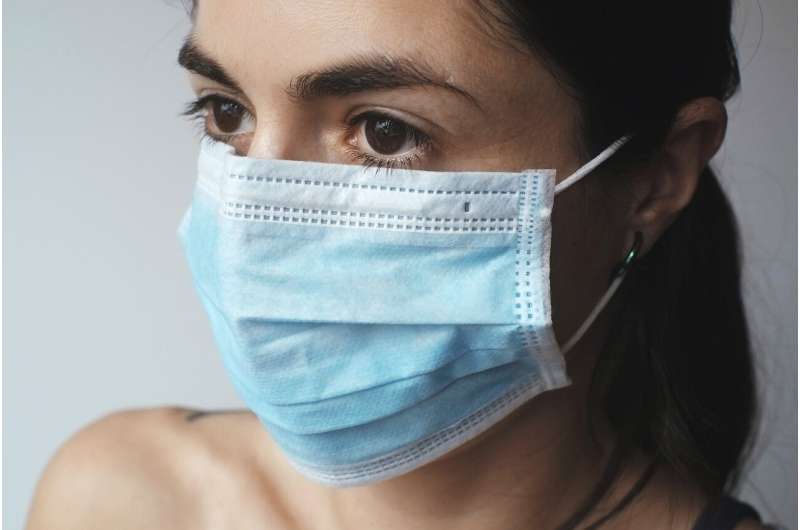Credit: CC0 Public Domain
Sure you're wearing that mask correctly?
It might not seem that complicated.
But you could be doing it wrong.
And perhaps worse, you might accidentally expose yourself further to the possibility of catching the coronavirus without the proper safety precautions.
Thankfully, "Mask Wearing 101" is not that difficult of a course to pass.
But it will require some attention to detail.
Fresno County interim health officer Dr. Rais Vohra and senior epidemiologist Dr. Stephanie Koch-Kumar, who investigates patterns and causes of disease and injury, provides some of the do's and don'ts to wearing a mask.
1. Wear a mask when out in public.
Though the Fresno County Department of Public Health didn't initially recommend residents wear masks when the coronavirus pandemic began in the United States, Koch-Kumar said that over time, more evidence showed that there was a higher community transmission of the coronavirus.
Which means people were catching COVID-19 and didn't know exactly how they got it.
In addition, there are folks who are asymptomatic (not showing signs of being sick) and could unknowingly pass the virus.
"The point of the mask is primarily to prevent others from you in case you have the illness," Koch-Kumar said. "At least with a mask on, someone who has the virus but doesn't realize it, when that person coughs, that mask could catch those respiratory droplets."
Fresno County suggested this week that residents begin wearing face coverings when out and about.
"It's not something that takes a huge amount of effort," Koch-Kumar said. "And it could help others."
2. Wear a mask if you'll be in close contact with someone who isn't family.
Vohra said some of the highest risk activities are interacting with people indoors and spending 30 minutes or longer without wearing a mask or not social distancing.
"Your airspace is going to be passed back and forth," Vohra said. "If you have to be within six feet of someone, wearing a mask is your best bet for protection."
3. Make sure the mask covers your mouth and nose.
Koch-Kumar suggests the mask even covers your chin if possible.
She also advises that the mask not be too loose, especially on the sides.
"You don't want big gaps on the sides of your mask," Koch-Kumar said. "You want it to be fitted but still make sure that you can breathe.
"I also see people who have the masks under their nose. That's not really protecting yourself. You need that mask over your mouth, as well as over your nose."
4. Don't put masks on babies and children who are under 2 years old. Or seniors who already struggle to breathe.
"You will have to play it by ear with toddlers," Kock-Kumar said. "But for babies and some elderly seniors, you don't want to obstruct their breathing pathway."
5. Don't touch the outside of the mask.
Say the mask does its job and stops the virus from getting into your mouth or nose. But the virus lands on the outside of your mask.
If a person touches the outside of the mask, the virus could then be on his/her hand and passed onto whatever else is touched, doctors said.
Which is why doctors also strongly advise to not touch your face.
"Don't fiddle with the mask," Koch-Kumar said. "When you're taking the mask off or putting it on, use the side straps.
"One of the worst things you could do is touch the outside of the mask, then touch the inside of the mask and put it back on. Then you're possibly breathing in that virus."
6. For those who feel claustrophobic wearing a mask, Koch-Kumar suggests to just try to slow your breathing and calm your anxiety.
"Remind yourself," she said, "that the mask is not actually impeding your breathing."
©2020 The Fresno Bee (Fresno, Calif.)
Distributed by Tribune Content Agency, LLC.























